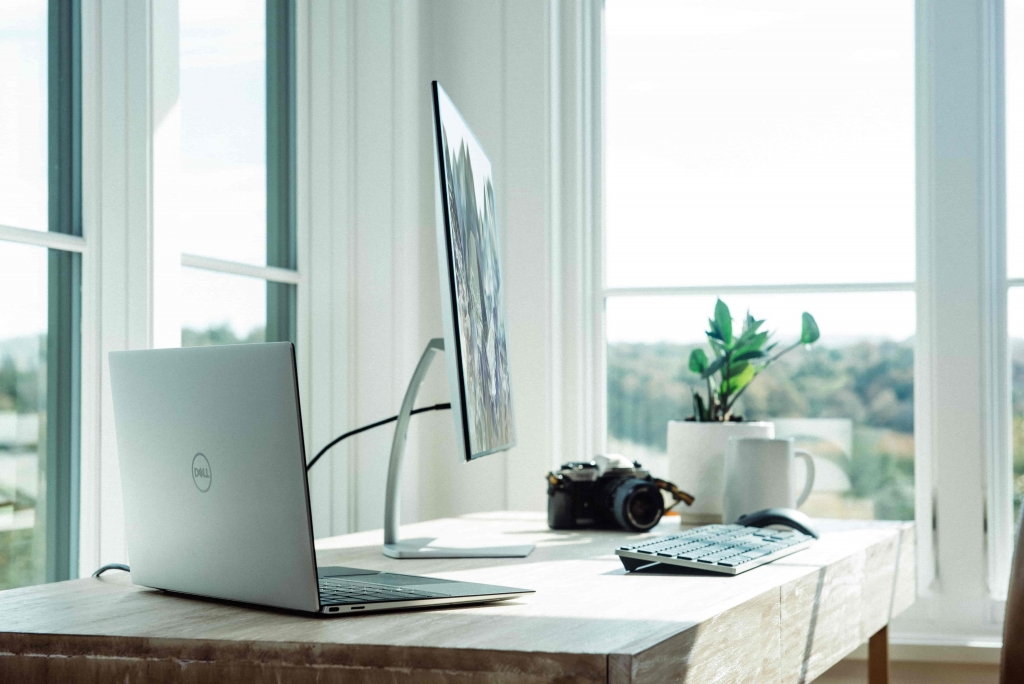
A work from home space does not always require the creation of a completely separate office space in which to conduct business during the workday.
Even if you lack the space to dedicate an entire room to a work from home office, you can create a workspace that supports your productivity and creativity during billable hours—and that allows you to seamlessly tidy up to enjoy your home during your free time. If you’re unsure how to accomplish this, refer to the eight tips below.
1. Assess Your Space
Prior to deciding on a location for your makeshift home workspace, you’ll want to assess your home using two criteria. For starters, it’s critical to identify the areas of your home where you feel most productive. Second, it’s critical to consider the functionality of existing spaces in your home, such as a kitchen nook or guest bedroom.
Consider the type of environment in which you perform best when designing your work from home space. Do you require complete seclusion, a small amount of background noise, or easy access to the kitchen for coffee refills?
2. Consider Your Workstyle
A workstation that satisfies your boss or roommate may not be ideal for your own work preferences. Consider your unique needs and habits when arranging your work from home space.
Have you considered what your definition of joyful work entails? Consider whether you envision yourself as a lone writer on the couch or as a host of virtual meetings conducted via a standing desk equipped with a camera. After that, you can proceed with layout decisions. Once you’ve defined the role you envision for your workday, you can create a space to support it.
Additional options include adding greenery, hanging a favorite piece of art, installing speakers, or bringing in a fan or small space heater. Because your work area sets the tone for productivity, you’ll want to make it a comfortable, inspiring space.
Suggested Read: 8 Easy Ways to Prep Your Kitchen for Holiday Cooking
3. Begin Small
On a similar note, you can consider even the tiniest spaces in your home as potential work areas. Occasionally, a good corner can serve as the ideal location for a designated work from home area. Take on the challenge of transforming a small space and stretch your creative abilities.
4. Maintain an organized environment
When establishing a workstation in a room that serves multiple purposes, avoid allowing your workstation to take over the space. For instance, if you choose to work from your dining room, staying organized and confined to a single area will help you associate that area with work and productivity, while the other area will be used for dining.
Suggested Read: Lifestyle Apps and Gadgets to Improve Productivity
5. Select a Method of Filing
Even if you do the majority of your work online, it’s a good idea to have a limited amount of storage space for papers that will inevitably accumulate and crowd your work from home area. Consider the following: tax returns, pay stubs, bank statements, and bills.
If you have plenty of shelf or drawer space, choose file boxes or attractive baskets. Utilize a desktop file sorter for papers that you need to keep on hand throughout the day. Label your files and file boxes neatly and clearly; this will aid in locating what you need and will assist you in remaining organized as new papers pile up.
5. Make It Unique
Additionally, if you work in a location that serves multiple purposes, use this trick to separate work and life.
If you work at a shared space, such as the kitchen table, establish a daily ritual of clearing the table from breakfast and bringing in your work supplies. Of course, this does not have to be a lengthy process—simple rituals will suffice. This could include relocating your favorite plant from the windowsill to sit beside you, grabbing a framed photo from the TV stand and placing it next to your laptop, or brewing the cup of tea you save for work hours only.
6. Become Mobile
If you’re wondering how to organize all your work essentials in a manner that also facilitates cleanup at 5 p.m. Construct a storage unit that is easily contained and transportable. A small, portable file box, such as one with a lid and handles, makes an excellent home for papers. When you’re finished with your work for the day, it’s easy to move around and tuck into a closet, and the lid means you’ll see less visual clutter caused by clusters of paper. It’s a win-win situation!
Suggested Read: What Will You Do After the Lockdown?
7. Consider vertically
Another option for those with a more permanent — albeit small — workstation. Even if you’re confined to a small nook with limited furniture space, you can still maximize your storage and organizational capabilities. Make the most of your vertical space. A wall-mounted file organizer is an excellent way to organize papers by project or category, particularly for frequently used items. To minimize visual noise, choose a color that complements your wall color.
8. Select the Appropriate Side Table
Those who prefer to work from their sofas may be content with a C-table, which can double as a place to relax or entertain. C-tables are ideal for those who work on a laptop. They tuck neatly under the sofa and occasionally over the arm and double as a ‘desk’. When not in use as a desk, the C-Table can be used as a drink table or for decorative purposes only.
Apart from self-discipline and a strong Wi-Fi connection, one of the keys to successfully working from home is having a comfortable, convenient workspace. And no, the couch is not included.

Additionally, it’s a good idea to “define what distracts you” in order to eliminate distractions. Is it, for example, the growing pile of dishes in the sink, the street noise below your bedroom, or the allure of the television? Understanding what facilitates and hinders your work will assist you in determining the optimal location for your business.
In general, you can use these guidelines to assist you in creating a better work from home space that will work to your liking and increases your productivity.
Suggested Read: How to Create the Perfect Home Office Space


